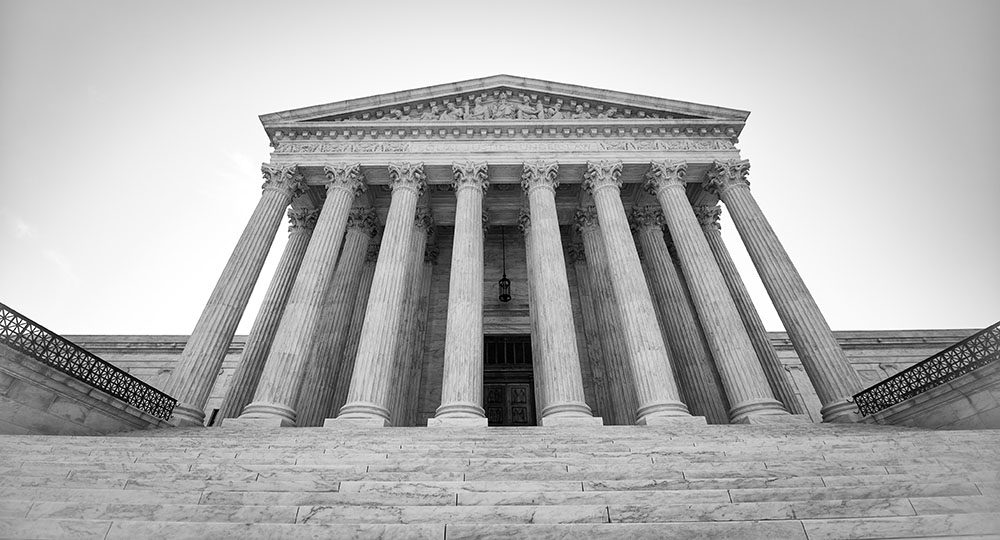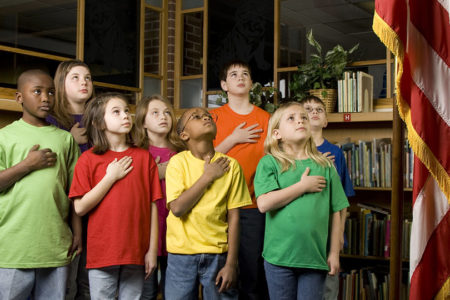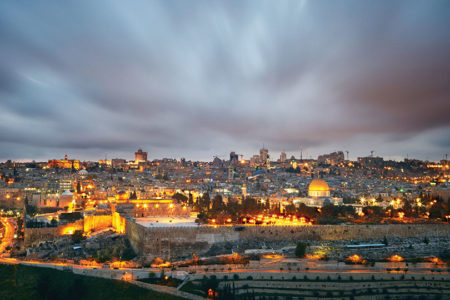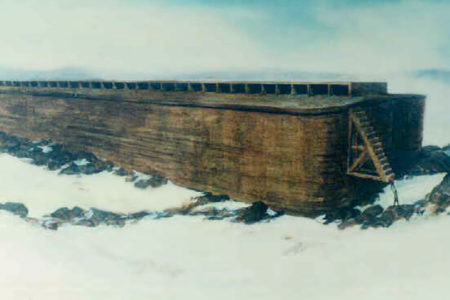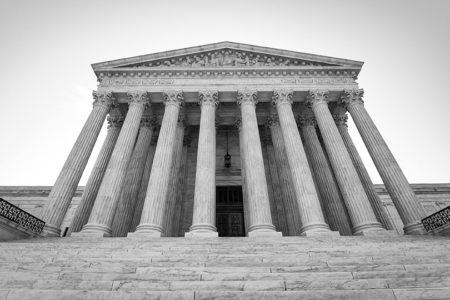In the Shadow of a Praying Nation
Man will ultimately be governed by God or by tyrants. —Benjamin Franklin
Of all of our Founding Fathers, Benjamin Franklin was probably one of the most theologically unorthodox. Raised in a Christian home where the Bible was read, he attended church regularly as a boy and was exposed to the preaching of famous Calvinist pastors. His favorite author was John Bunyan of Pilgrim’s Progress fame.
But during his teen years he drifted away from traditional Christian belief and, as a young man, even fancied himself a deist for a while. However, in his later years Franklin seemed to settle into a view of God that was more traditional, even though his personal life remained iconoclastic and even somewhat scandalous to 18th-century sensibilities.
Yet he was not antagonistic to Christianity. When the famous English evangelist George Whitefield preached, Franklin was in the audience. And when Whitefield asked his listeners for an offering to establish an orphanage in Georgia, Franklin emptied his pockets of a considerable sum, giving every last coin to the cause.1
I begin with Benjamin Franklin for a reason. He is a good litmus test. This summer marks the 45th anniversary of the ruling that outlawed reading the Bible and reciting the Lord’s Prayer in America’s public schools. A look at Franklin, one of the more nontraditional thinkers at our nation’s founding, helps us see how far America’s institutions have drifted from recognizing the need for a collective, vibrant, national acknowledgment of God—even by Franklin’s standards.
As for his own religious “creed” as he grew older, Franklin noted, “I believe in one God, creator of the universe. That He governs it by His providence. That He ought to be worshipped.”2
It would be tempting to assume Franklin would have believed such religious worship needs to be relegated strictly to the church and chapel, behind closed doors and shuttered windows. That is what today’s liberals, who advocate for a strict “separation of church and state,” would have us believe, at least.
But that was not Franklin’s philosophy. Here is what he told the Constitutional Convention in 1787:
In the beginning of the contest with Great Britain, when we were sensible of danger, we had daily prayer in this room for the Divine protection. Our prayers, sir, were heard, and they were graciously answered….I therefore beg leave to move—that henceforth prayers imploring the assistance of Heaven, and its blessings on our deliberations, be held in this Assembly every morning before we proceed to business.3
With that model of religious expression in mind, let’s fast-forward 175 years to 1962.
Past and Future Shock: Outlawing Prayer in School
On June 25, 1962, a slim five-justice majority of the U.S. Supreme Court handed down a decision titled Engel v. Vitale. When people woke up, read their morning newspapers, and saw what the High Court had done, they were stunned. The decision was almost incomprehensible.
The case arose because the State of New York had been using a short, non-denominational, voluntary prayer at the beginning of each school day in the public schools. As the lower court had aptly pointed out, student participation was never required, and the schools were instructed to exempt children from these activities if their parents objected.
But the Supreme Court brushed that fact aside and decided the prayers violated the “Establishment Clause” of the First Amendment. It arrived at this conclusion by the use of two mammoth jurisprudential leapfrogs.
First, the Supreme Court used a radically revisionist sense of history to justify the outcome in Engel. It asserted that the practice of government-composed prayers in England was one of the reasons the early Puritans sought religious freedom in the colonies. I know of no respectable view of history that supports that view. But even if it were true, does it make sense to use an example of English religious tyranny as a justification to stifle the completely voluntary prayers of American citizens?
The second major faux pas was even more egregious: The five justices failed to cite a single legal precedent to support their shocking decision. This embarrassing fact was later admitted by the Supreme Court the next year, in 1963, when it decided the Abington School District case—a decision that this time outlawed Bible reading and recitation of the Lord’s Prayer in public schools.
Bad legal decisions are not static, unfortunately. By the 1980s, the Supreme Court (Wallace v. Jaffree) extended the prayer ban to outlaw even a moment of silent “meditation or prayer” in schools. It found an unconstitutional motive behind such programs, even if the “threat” was only the merest possibility that some children might choose to pray silently rather than daydream about what the cafeteria might be serving for lunch that day.
In effect, the Supreme Court was establishing a rule that, if a public school practice harbors even the remotest or most speculative type of potential for offending anyone who rejects God, that was now enough to justify taking away the religious-expression rights of the rest of America.
In 1992, in Lee v. Weisman, the Supreme Court went one step further. The facts here had nothing to do with the religious activities of a grade school or with children in a classroom, as prior cases did. In those cases, at least some debatable argument could be made that impressionable children might be religiously coerced.
Instead, Lee dealt with a prayer to have been offered by a rabbi—a private citizen from the community—at a non-mandatory high school graduation ceremony. Astonishingly, the majority opinion decided that the mere possibility some high school seniors might feel inclined to stand in respectful acknowledgement of a prayer they do not agree with (i.e., a vague kind of psychological pressure) was sufficient to hit the trip wire of “separation of church and state.”
Justice Antonin Scalia, in a strongly worded dissent, dubbed the majority opinion’s legal departure from logic, history, and legal reasoning as a form of “psycho-journey.” In retrospect, he may have been too generous.
Eight years later, the Supreme Court faced yet another high school and yet another prayer. However, in the case of Sante Fe Independent School District v. Doe (2000), the prayer was not even offered inside a school building or at a graduation ceremony. Instead, a student selected by the student council offered it at a varsity football game. Again, the majority of the Supreme Court ruled the prayers unconstitutional, this time claiming they had the appearance of bearing the endorsement of the public school district, despite the fact that only individual students would be doing the praying.
In a stinging dissent, the late Chief Justice William Rehnquist, joined by Justices Scalia and Clarence Thomas, described the majority opinion this way:
But even more disturbing than its holding is the tone of the Court’s opinion; it bristles with hostility to all things religious in public life. Neither the holding nor the tone of the opinion is faithful to the meaning of the Establishment Clause, when it is recalled that George Washington himself, at the request of the very Congress which passed the Bill of Rights, proclaimed a day of “public thanksgiving and prayer, to be observed by acknowledging with grateful hearts the many and signal favors of Almighty God.”4
With this gloomy line of cases stretching over several decades, it is easy to figure out that this court-created configuration of legal rules that “bristles with hostility to all things religious in public life” bodes poorly for the future of religious freedom in America.
What’s Left?
Despite the scorched-earth pattern of Supreme Court decisions dealing with school prayer, there are two remaining avenues of religious expression still left standing—at least at present.
First is the category of chaplaincy-type prayers offered in legislative bodies. In Marsh v. Chambers, a 1983 case, the Supreme Court upheld the Nebraska Legislature’s practice of opening each session with a prayer offered by a chaplain paid by public funds. The Court noted that such practices are deeply imbedded in America’s history and religious and political traditions. For the want of a better term, we can call this the ubiquity rule: The more a particular practice of prayer by a legislative body can be traced to our founding traditions, the more likely it is, perhaps, to be permitted constitutionally.
When atheist Michael Newdow sued in an effort to stop the prayers that were planned as part of President George W. Bush’s inauguration, the D.C. Court of Appeals cited the Marsh case rationale in rejecting Newdow’s arguments when it decided the case in 2005.
Then there is a second exception—applicable to most of us—that permits religious expression in public arenas. The Supreme Court has ruled that private students (or private citizens, for that matter) cannot be prohibited from praying or expressing themselves religiously (1) as long as they do not violate otherwise valid time/place/manner restrictions that the government (or school district) applies equally to everyone and (2) as long as the school district or governmental unit does not give the appearance that it is officially endorsing that speech.
As the Supreme Court put it in Board of Education of Westside Community School v. Mergens: “[T]here is a ‘crucial difference’ between government speech endorsing religion, which the Establishment Clause forbids, and private speech endorsing religion, which the Free Speech and Free Exercise Clauses protect.”5
Looking Back and Pressing Onward
Ben Franklin’s observation that people will ultimately be governed either by God or by tyrants proves that one need not be a prophet to apply biblical truths to public policies. The Christian consensus at the founding of America taught that only two forms of government were possible: a freely elected, representative, constitutional form where both the electorate and the elected understood the moral and spiritual debt they owed to God for their freedoms; or despotism. There was no third alternative.
Humanists and secularists would have us mistakenly believe a third option exists: that we can have a successful society where God is not invited to take His rightful throne at the center of public life and where religious liberty, if it exists at all, is relegated to whispers behind closed doors and in darkened rooms, for fear of detection. But of course, that type of society is only one extremely small step removed from total tyranny.
Have we forgotten what the Lord has said through His prophet Jeremiah?
If that nation against whom I have spoken turns from its evil, I will relent of the disaster that I thought to bring upon it. If it does evil in My sight so that it does not obey My voice, then I will relent concerning the good with which I said I would benefit it (Jer. 18:8, 10).
The responsibility of restoring America belongs first and foremost to the church of Jesus Christ. We must bear the burden. We must light the fires of revival and restoration. It was no accident the Great Awakening preceded the Declaration of Independence by only a few decades.
If we thirst for freedom, then let us stoke the fires of spiritual awakening. And when we do, how amazed we will be to step out of the shadows of our Founding Fathers and stand in the light alongside them.
ENDNOTES
- John Eidsmoe, Christ and the Constitution: The Faith of Our Founding Fathers (Grand Rapids: Baker Book House, 1987), 191–213.
- James Srodes, Franklin: The Essential Founding Father (Washington, D.C.: Regnery, 2002), 386.
- David Barton, Original Intent: The Courts, the Constitution, & Religion (Aledo, TX: WallBuilder Press, 1996), 185, citing James Madison, The Papers of James Madison, June 28, 1787, ed. Henry D. Gilpin (Washington: Langtree & O’Sullivan, 1840), 2:984–986.
- Sante Fe Independent School District v. Doe, 530 U.S. 290 (2000), Rehnquist., C.J., dissenting.
- Board of Education of Westside Community School v. Mergens, 496 U.S. 226, 250 (1990).
